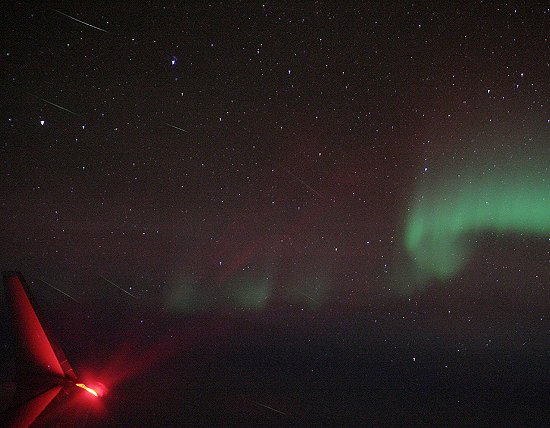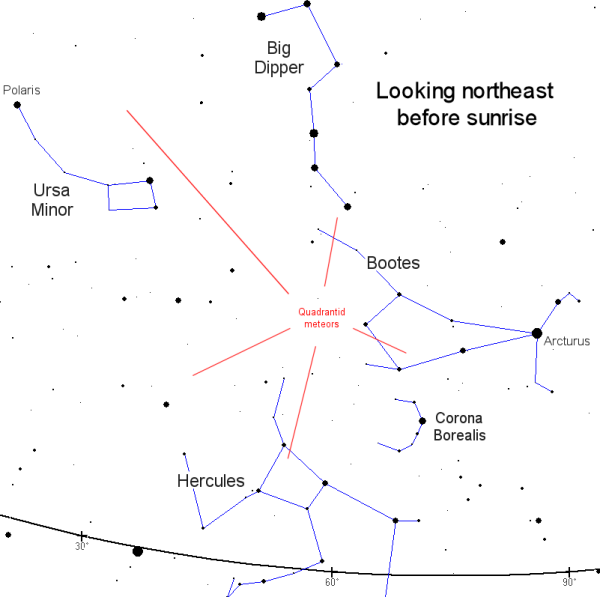The Quadrantid meteor shower is one of the year's best, producing more than 60 meteors per hour from a radiant near the North Star. In 2022 forecasters expect the shower to peak at 20:40 UT (3:40 pm EST) on Monday, Jan 3rd. The peak is brief, typically lasting no more than a few hours, and it does not always occur at the predicted time, so observers are encouraged to be alert for meteors throughout the night of January 3rd. Although the Quadrantids are a major shower, they are seldom observed. One reason is weather. The shower peaks in early January when northern winter is in full swing. Storms and cold tend to keep observers inside. Above: In 2008, NASA-supported scientists flew an airplane above the clouds and over the Arctic Circle to gain a good view of the shower. Jeremie Vaubaillon of Caltech recorded these Quadrantids streaking through the aurora borealis outside the window of the plane. [more] Another reason is brevity. The shower doesn't last long, a few hours at most. Even dedicated meteor watchers are likely to miss such a sharp peak. In his classic book Meteor Astronomy, Prof. A.C.B. Lovell lamented that "useful counts of the Quadrantid rate were made in [only] 24 Januaries out of a possible 68 between 1860 and 1927. ... The maximum rate appears to have occurred in 1932 (80 per hour) although the results are influenced by unfavorable weather." The source of the Quadrantid meteor shower was unknown until Dec. 2003 when Peter Jenniskens of the NASA Ames Research Center found evidence that Quadrantid meteoroids come from 2003 EH1, an "asteroid" that is probably a piece of a comet that broke apart some 500 years ago. Earth intersects the orbit of 2003 EH1 at a perpendicular angle, which means we quickly move through any debris. That's why the shower is so brief. Quadrantid meteors take their name from an obsolete constellation, Quadrans Muralis, found in early 19th-century star atlases between Draco, Hercules, and Bootes. It was removed, along with a few other constellations, from crowded sky maps in 1922 when the International Astronomical Union adopted the modern list of 88 officially-recognized constellations. The Quadrantids, which were "re-zoned" to Bootes after Quadrans Muralis disappeared, kept their name--possibly because another January shower was already widely-known to meteor watchers as the "Bootids."
|

